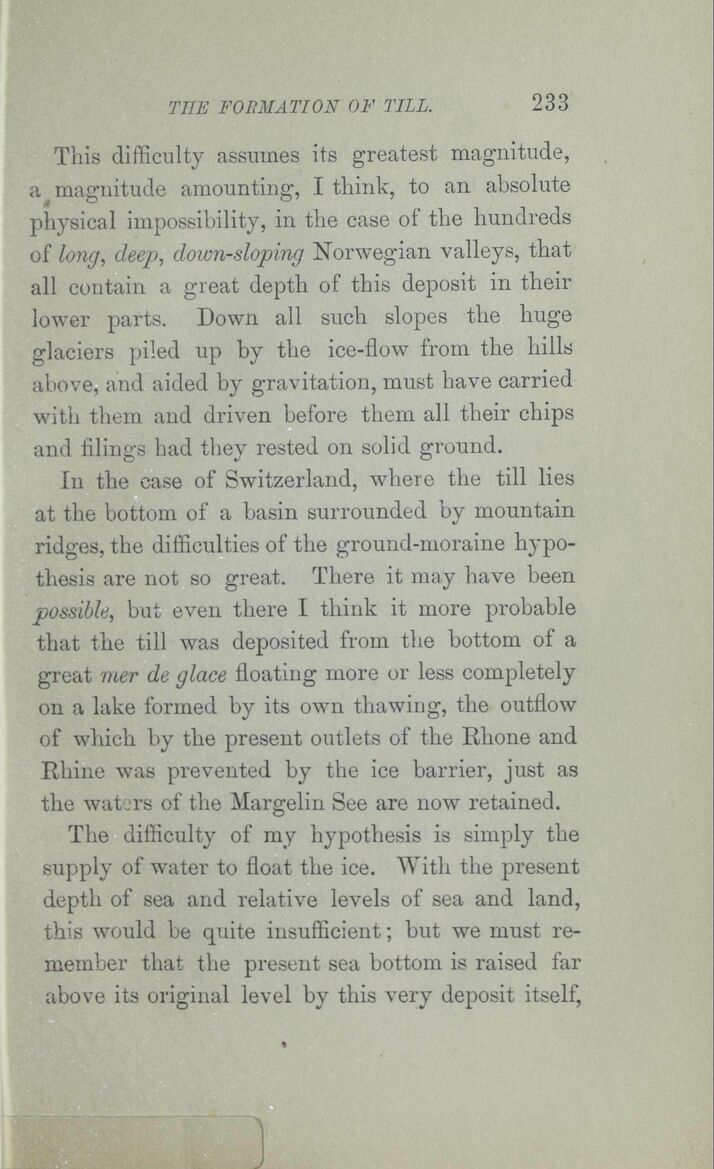
Full resolution (JPEG) - On this page / på denna sida - Sidor ...

<< prev. page << föreg. sida << >> nästa sida >> next page >>
Below is the raw OCR text
from the above scanned image.
Do you see an error? Proofread the page now!
Här nedan syns maskintolkade texten från faksimilbilden ovan.
Ser du något fel? Korrekturläs sidan nu!
This page has never been proofread. / Denna sida har aldrig korrekturlästs.
This difficulty assumes its greatest magnitude,
a magnitude amounting, I think, to an absolute
physical impossibility, in the case of the hundreds
of long, deep, down-sloping Norwegian valleys, that
all contain a great depth of this deposit in their
lower parts. Down all such slopes the huge
glaciers piled up by the ice-flow from the hills
above, and aided by gravitation, must have carried
with them and driven before them all their chips
and filings had they rested on solid ground.
In the case of Switzerland, where the till lies
at the bottom of a basin surrounded by mountain
ridges, the difficulties of the ground-moraine
hypothesis are not so great. There it may have been
possible, but even there I think it more probable
that the till was deposited from the bottom of a
great mer de glace floating more or less completely
on a lake formed by its own thawing, the outflow
of which by the present outlets of the Rhone and
Rhine was prevented by the ice barrier, just as
the waters of the Margelin See are now retained.
The difficulty of my hypothesis is simply the
supply of water to float the ice. With the present
depth of sea and relative levels of sea and land,
this would be quite insufficient; but we must
remember that the present sea bottom is raised far
above its original level by this very deposit itself,
<< prev. page << föreg. sida << >> nästa sida >> next page >>